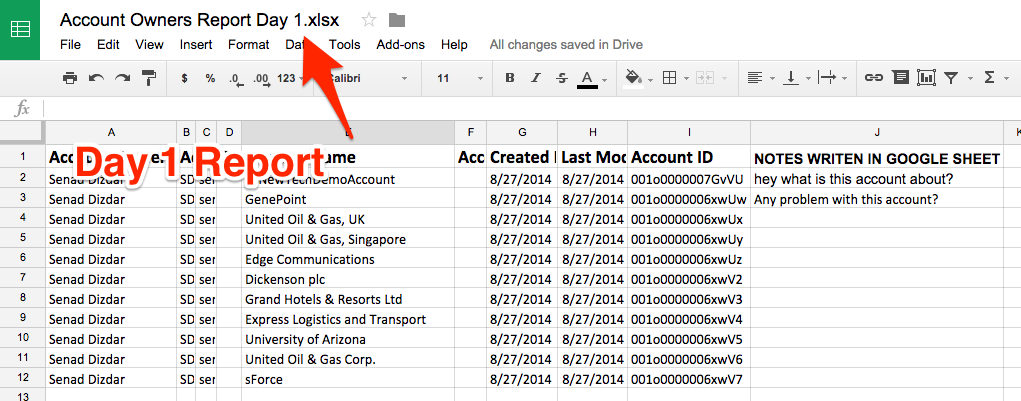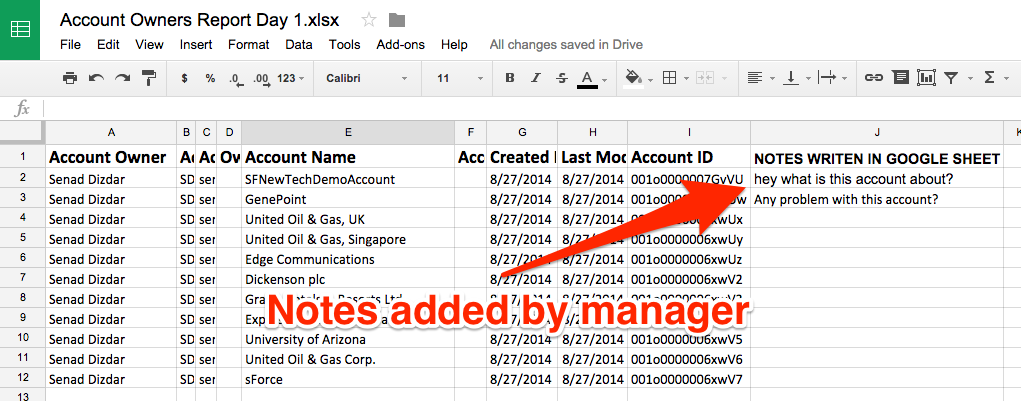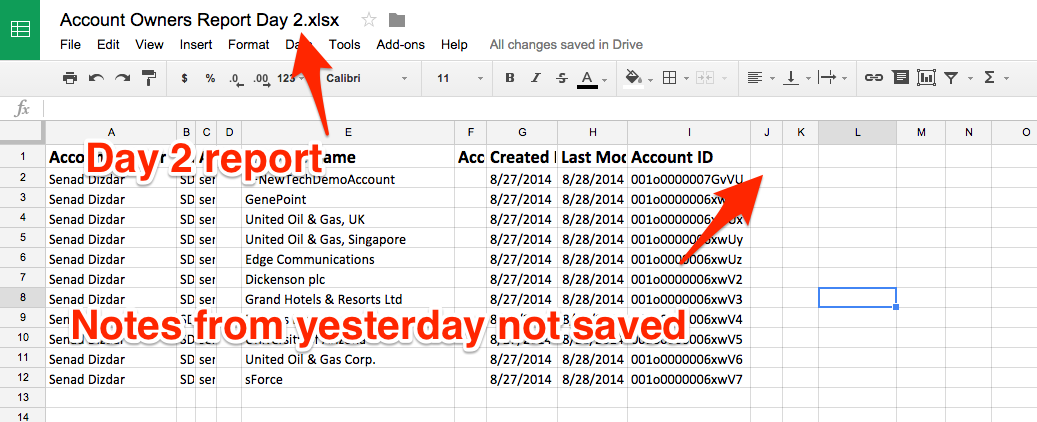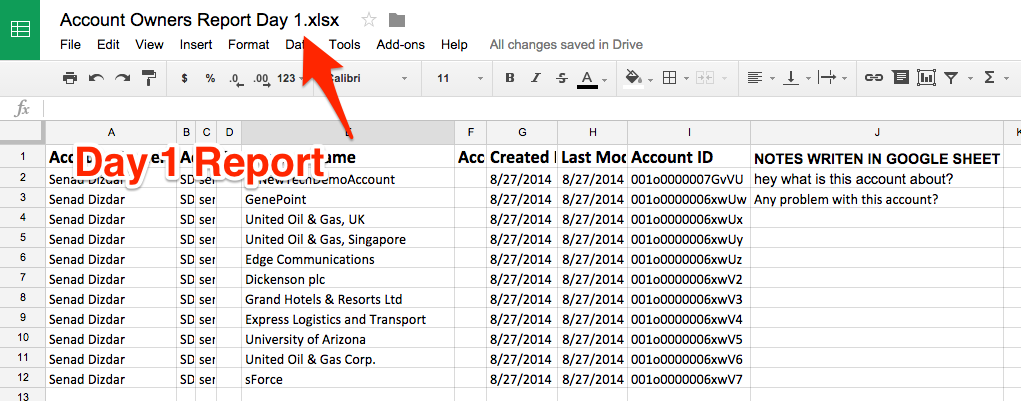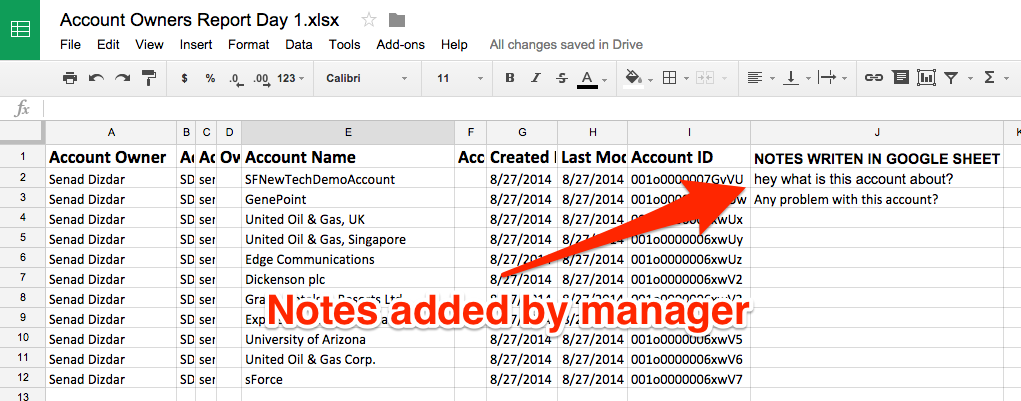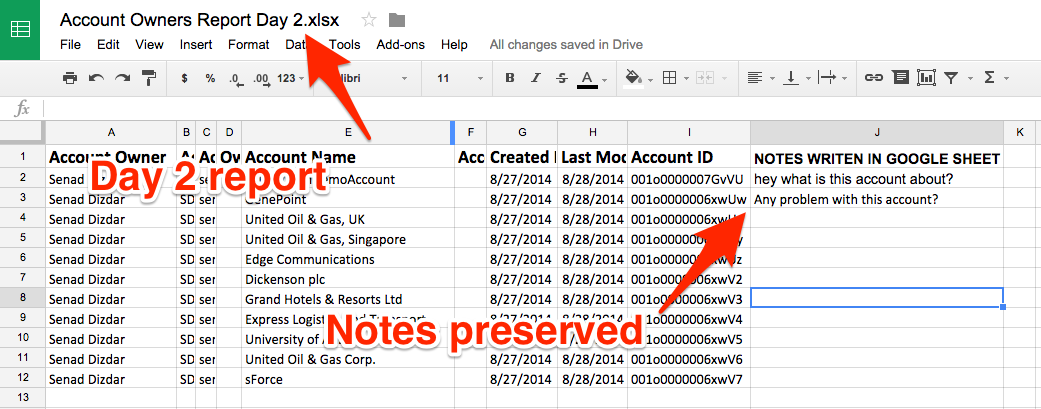If you use Salesforce as your CRM, you have access to a powerful drag-and-drop report builder inside your Salesforce account.
Need to show your boss every sales opportunity created in the last 90 days? How about every closed sale? Or every opportunity lost?
Salesforce can handle all of these queries with ease.
You can even automatically run your reports on any schedule that works for you. These can then be downloaded as a Microsoft Excel spreadsheet or exported directly into Google Sheets, Office 365 Excel Online, or MS Office 365 Excel. However, not everything is that rosy.
The Problem with Automated Reports
Automated reports in Salesforce provides you with dozens of spreadsheets. Each spreadsheet a snapshot of a certain point in time. If you’ve scheduled daily reports, you’ll have a new report each day that’s generated by Salesforce; which in and of itself, is pretty good.
Unfortunately, Salesforce doesn’t merge sheets together or give you one master sheet that always has the latest information.
This collection of sales spreadsheets makes collaboration inside your reports extremely difficult.
For example, if you type a note in today’s report in the spreadsheet you are viewing the report in, your note won’t be carried over into the updated spreadsheet the next time Salesforce runs the report. You lose your note, and your sales person never even sees it.
cloudHQ solves this problem by merging your Salesforce reports together. This allows you to type notes into the report and preserve those notes, no matter how many Salesforce reports you run.
Before: A Big Communication Problem
Let’s take a look at what this looks like without cloudHQ.
Here’s a daily Salesforce report showing all open prospects. We’ve exported it to Google Sheets.
This report was distributed to a manager, who entered comments about two accounts.
The next day, Salesforce sends us the same report with updated data. The problem is: the manager’s notes from the day before are now lost.
Salesforce simply created a new report. It didn’t merge today’s daily report with yesterday’s report.
This means using the collaboration tools built into Google Sheets is almost entirely useless. The same is true if you use Office 365 Excel Online or MS Office 365 Excel.
After: Communication Is Easy, And Helps Close More Sales.
Now let’s see what it looks like when using cloudHQ to merge the daily reports from Salesforce.
We start with the same report from day one:
As before, a manager adds two notes.
The next day, Salesforce runs and exports a new spreadsheet as scheduled, with daily prospects.
This time, however, cloudHQ merges the data in both reports.
The result? The data is updated, and the collaboration notes are preserved.
Don’t Forget to Take Advantage of Collaboration in Google Sheets and Office 365 Online
Collaboration is one of the biggest benefits of online spreadsheets.
Unfortunately, Salesforce’s automatic reports aren’t set up to allow effective collaboration.
cloudHQ’s new report syncing feature restores the collaboration feature, making it much easier to communicate back and forth with managers and other team members about what’s happening with your sales and marketing efforts.
Photo credit: © 2015 r. nial bradshaw

